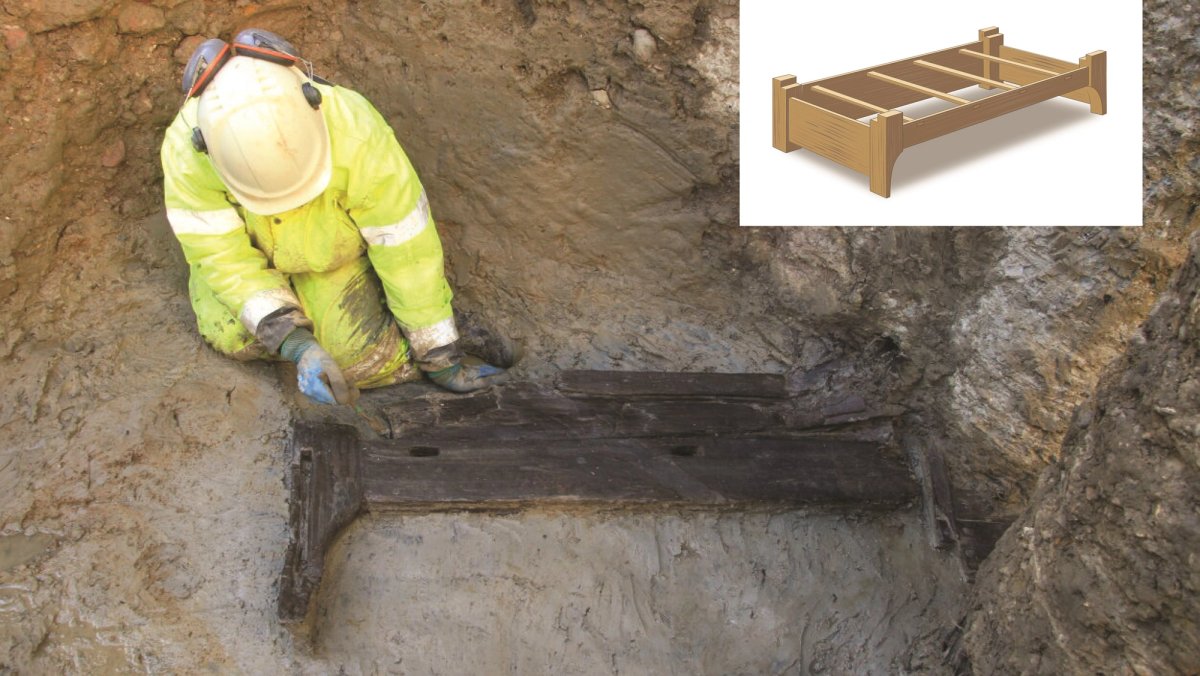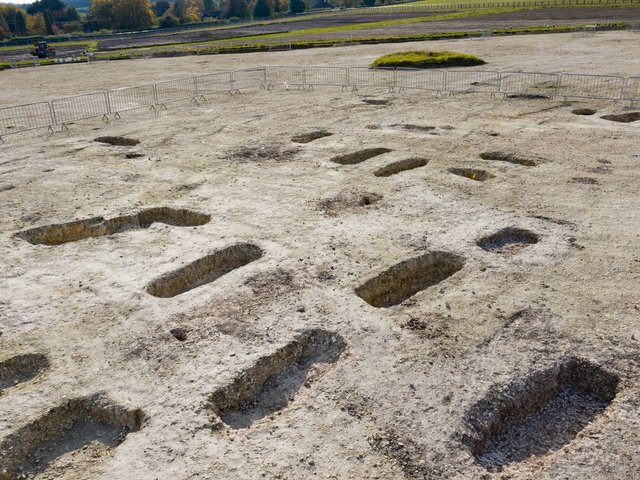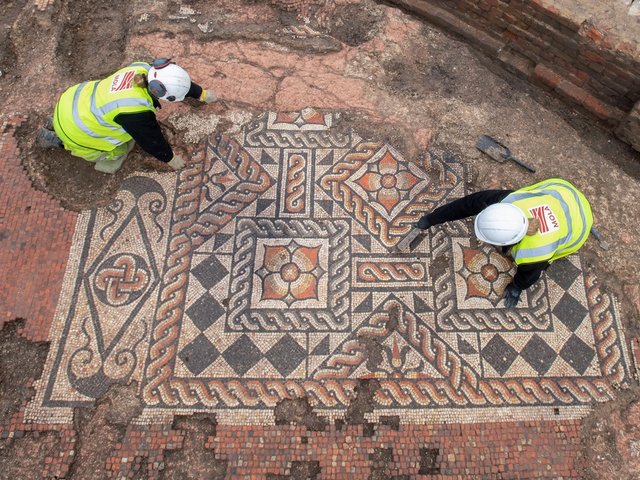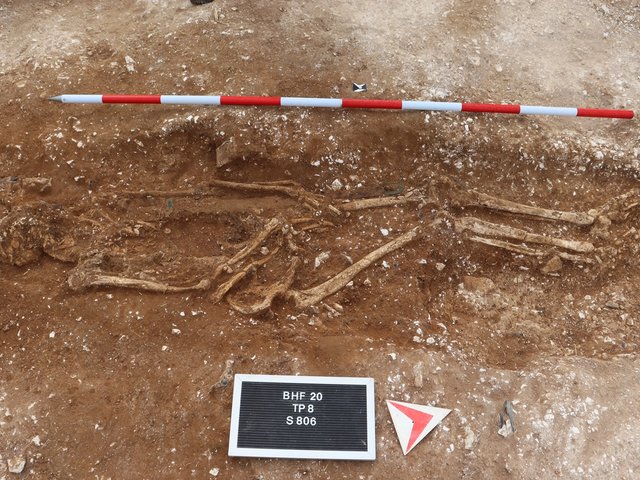A Roman oak bed, on which a dead person may have been carried to a grave now lying six metres below the surface of modern London, has been excavated along with a wealth of startlingly well preserved finds spanning many centuries, by archaeologists working in advance of a huge office development at Holborn Viaduct. The timber has been preserved by the water-logged soil around the lost river Fleet, which was infamous as a reeking open sewer by the time it was covered over in the early 19th century.
Although the dead are commonly depicted as lying on beds in Roman funerary sculpture, real beds used in burials are very rare finds, and this is the first complete example ever found in Britain—though a much later Anglo-Saxon bed burial of a young woman was found in Cambridgeshire in 2012.
The London bed was dismantled before being laid into the grave, but all the parts of a finely carved high quality piece of furniture, originally held together with pegged joints, have survived. Post excavation research will certainly reveal more about the burial, though the timber has survived better than the skeletal remains of its owner—who may have been one of the earliest Romans in London, since among the grave goods there was a decorated lamp dated to between 48-80 AD, decades at most after the invasion of 43AD.

The decorated Roman lamp © MOLA
Heather Knight, a project officer at MOLA archaeology, says finding graves was not surprising on a site just west of the Roman city walls and beside the major Watling Street Roman road, but the condition of the finds had astonished them. “The levels of preservation we’ve encountered—and particularly uncovering such a vast array of wooden finds—has really blown us away.”
The finds include five equally well preserved oak coffins: only three have ever been found before in London. Personal possessions buried with the dead include the lamp, a delicate glass vial, and jet and amber beads.
The site has already produced a mass of finds as the archaeologists worked down to the Roman level, including chalk floors and timber lined wells probably from a medieval tannery—one of the many noisomely polluting industries which flourished on the river banks—and a large 16th-century water pipe believed recycled from a ship. There were graves from a 16th-century cemetery linked to nearby St Saviour’s church, and evidence of the shops, houses and a pub built as the site was redeveloped after the devastation of the Great Fire of London in 1666.
The next phase of life on the site will be a 265,000 sq. ft office scheme being developed by Royal London Office Asset Management, including new offices for the global law firm Hogan Lovells, based at Holborn Viaduct for 40 years. Their UK managing partner Penny Angel says they were fascinated by the discoveries on their site. “We are looking forward to seeing what new stories emerge about life here on this historical site that borders the River Fleet, based on MOLA’s findings.”
A spokeswoman for MOLA says that all the finds are still in conservation—particularly tricky for waterlogged timber, to prevent it from crumbling into dust as it dries out—but it is hoped that some will be on public display in the new buildings.






